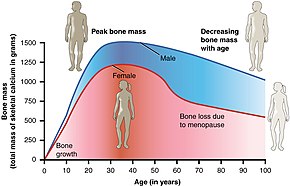
What is Osteoporosis?
Osteoporosis literally means “porous bone”
It is a disorder that leads to thin and weakened bones making them more prone to fractures. Because there are usually no symptoms until a bone is broken, it is often called a “silent” disease.
The body is constantly breaking down old bone tissue and replacing it with new tissue. Healthy bone tissue looks like a honeycomb under the microscope. Around the age of 30 the production of new bone tissue begins to slow and slowly the body will break down more bone tissue than it replaces. This results in the holes of the “honeycomb” get larger which weakens the bones making them much more susceptible to fractures.
If your bone density is low, but not low enough to be diagnosed as osteoporosis, you will be described as having osteopenia. You should consult your doctor to plan how you can slow down the progression of the disorder before it develops into full blown osteoporosis. This can be done through diet, exercise and taking certain medications.
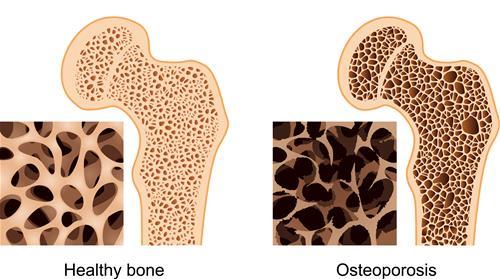
Signs and symptoms of Osteoporosis
This may be a totally silent disease and the first you know about it is when you sustain a fracture.
If you have any unexplained fracture your GP will suggest testing. If you have any disease that may mean you are more likely to have it or any family history then a simple bone density test can be requested. Then there are various treatment options available.
Fractures from osteoporosis are most likely to occur in the hip, spine or wrist but other bones be affected.
Bone fractures are always potentially serious in the elderly as many result in the need for surgery, hospitalisation and potentially a period of limitations in mobility.
Soft bones can also lead to other symptoms
- Chronic pain
- Reduced height and a stooped or hunched posture if the osteoporosis affects the spine
- Reduced mobility
RISK FACTORS
Gender
Women are at higher risk than men. 68 % of the 44 million people at risk are women and that is twice the number of men.
Age
The older you are the greater the risk.
60 years old- 10% have osteoporosis
70 years old- 27%
80 years old- 35%
Menopause
Menopause brings about changes in hormones, such as a reduction in oestrogen.
Your body frame
Women who are thin and small-boned (generally under 9 stone) are at higher risk.
Ethnicity
Caucasian and Asian women are at higher risk due to differences in bone density.
Certain medical disorders
Rheumatoid arthritis, type 1 diabetes, premature menopause and anorexia nervosa are among several disorders that can affect the health of your bones.
Medications
Some commonly used medicines can cause loss of bone mass. These include:
1. Glucocorticoids: A type of medicine used to control diseases like arthritis, asthma and lupus
2. Some epilepsy drugs
3. Gonadotropin-releasing hormones, which are used to treat endometriosis
4. Antacids with aluminum (aluminum blocks calcium absorption)
5. Some cancer treatments
6. Too much thyroxine used to treat an underactive thyroid
Family history
If you have any member of your family who has or suffered from osteoporosis then your risk of having it goes up.
Previous fracture
Anyone who has had a fracture after the age of 50 are at higher risk of having another fracture.
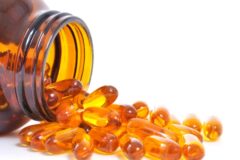
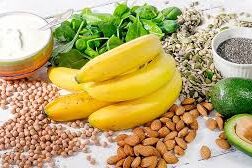
Reducing your chances of getting it
1. Diet and nutrition
Most women need to boost both their calcium and vitamin D intake. Living in the UK it is hard to get enough Vitamin D from sunlight and diet so it may be advisable to take supplements.
It is the role of Vitamin D to help the body absorb Calcium into the body from your diet.
Bones also need adequate levels of protein, vitamin K, vitamin C, magnesium and zinc.
2. Exercise
Physical activity strengthens your bones and the muscles supporting them. When muscles pull on the bones it encourages it to strengthen.
Exercise also improves your balance, which is very important in preventing falls.
It is important to include plenty of weight bearing activities such as walking, running and climbing stairs.
3. Stop smoking
Cigarette smoke harms your bones and lowers the amount of oestrogen in your body.
4. Limit your caffeine
People who drink a lot of caffeine lose more bone tissue than those who do not.
5. Limit alcohol intake
Alcohol makes it difficult for your body to absorb calcium.
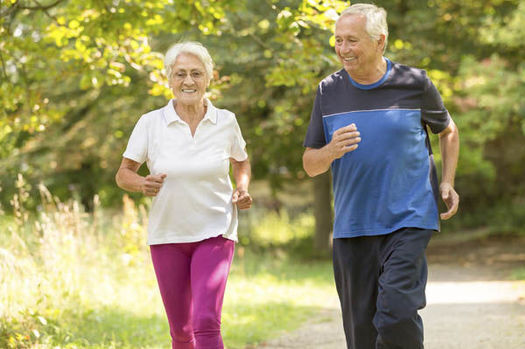
EXERCISE EXERCISE EXERCISE
Regular exercise is important for building strong bones when we are in our 30’s and 40’s and absolutely essential for maintaining bone strength when we are older.
Bone strength is built in your 30’s and 40’s
Bone mass in women peaks in their 30’s
What not everyone knows is that exercise is one of the best ways to strengthen bones and prevent osteoporosis.
Both weight-bearing exercise on your feet and resistance exercises to build muscle strength increase your bone density. The muscles pulling on the bones cause them to strengthen. By exercising regularly not only do you strengthen your bones but you also improve your balance and flexibility and help reduce your risk of falls.
It is important to exercise safely and follow a program that suits your age, strength and ability.
Maintaining good posture is also very important keeping the shoulders back and trying to stand upright with the chin well tucked in.
Always be careful when lifting objects and make sure you bend from your hips and knees and make sure you engage your core muscles, especially your stomach muscles, to protect your back.
Weight-Bearing Exercises
Such as
- Walking
- Climbing stairs (always use a handrail to prevent falls)
- Dancing
- Playing tennis
- Gardening
Strength and Flexibility Training
Work on your strength and flexibility with these activities:
- Free weights and weight machines
- Swimming
- Bicycling
- Yoga
- Tai Chi
- Gentle stretching
- Pilates
Weight-Bearing Exercises
The best activity for your bones is anything weight bearing that forces your body to work against gravity. When working with your full body weight on your lower limbs, more stress is placed on your bones, making your bones work harder.
Many exercises can be done easily in the comfort of your home such as walking, running on the spot, jumping, skipping and walking up and down the stairs.
Also walking up and down any hill is excellent for your bones.
Lower-impact weight-bearing exercises can also help keep bones strong. These are safer if you cannot do the high-impact exercises
e.g- Fast walking, bike, cross trainer and aerobics

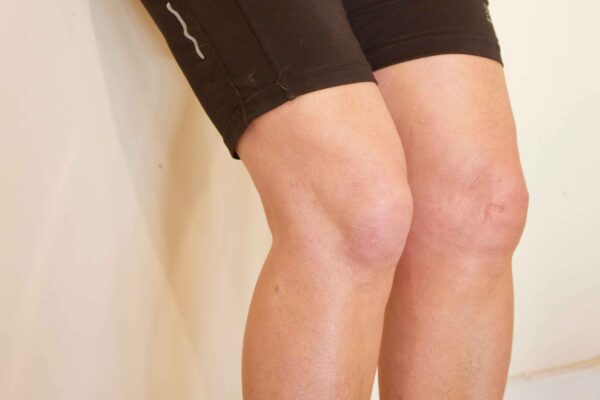
Tips for Safe Exercise
1. Try to aim to exercise for at least 30 minutes of every day
2. If you have serious medical problems such as heart trouble, high blood pressure, diabetes or other serious medical problems then check with your doctor before beginning a regular exercise program.
3. Build up exercises gently and if using weights increase them slowly and gently.
4. Stop any exercise that causes pain.
If you have osteoporosis, do not risk the following
- Skiing
- Skating
- High impact sports
- Golf (twisting action is hard on your spine)
Source: NIH Osteoporosis and Related Bone Diseases National Resource Center
Senior Health; Womenshealth.gov; What is Osteoporosis?, Staywell Krames, 10/17/2015; Osteoporosis, Staywell Krames, 8/1/2016; Preventing Osteoporosis: Avoiding Bone Loss, Staywell Krames, 10/17/2015; Understanding Bone Loss, Staywell Krames, 10/11/2015.

